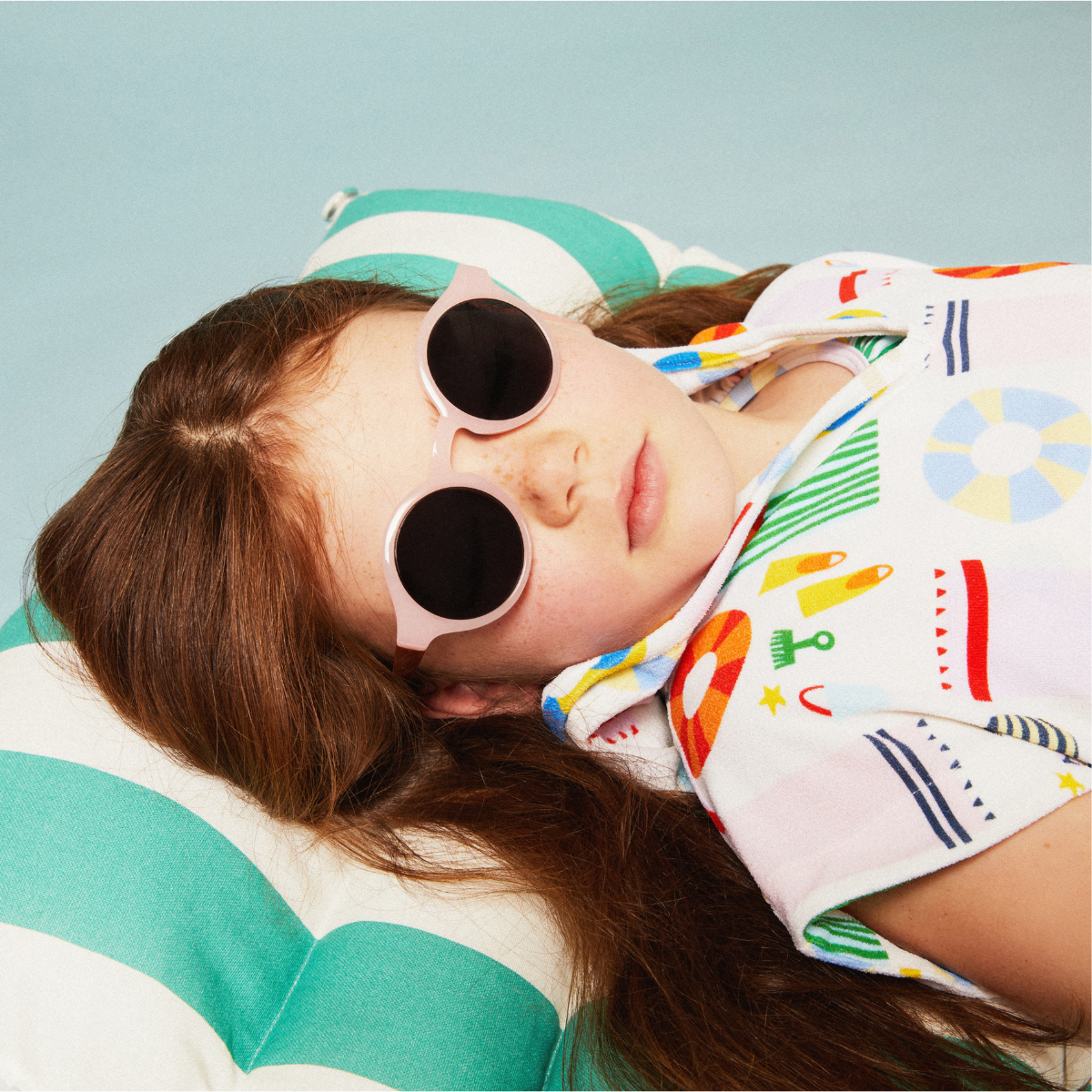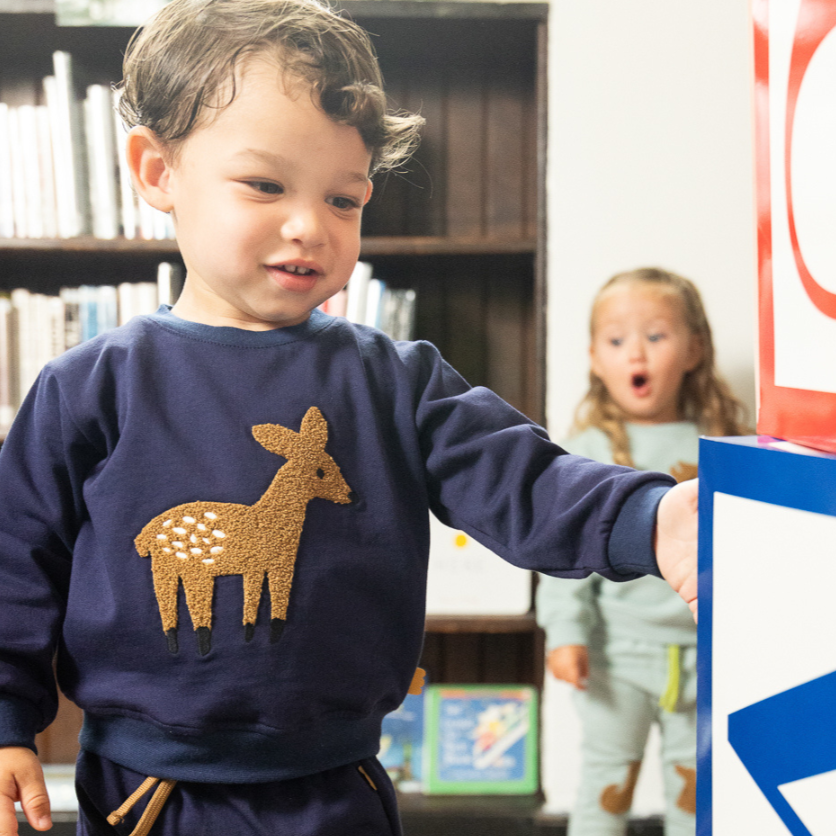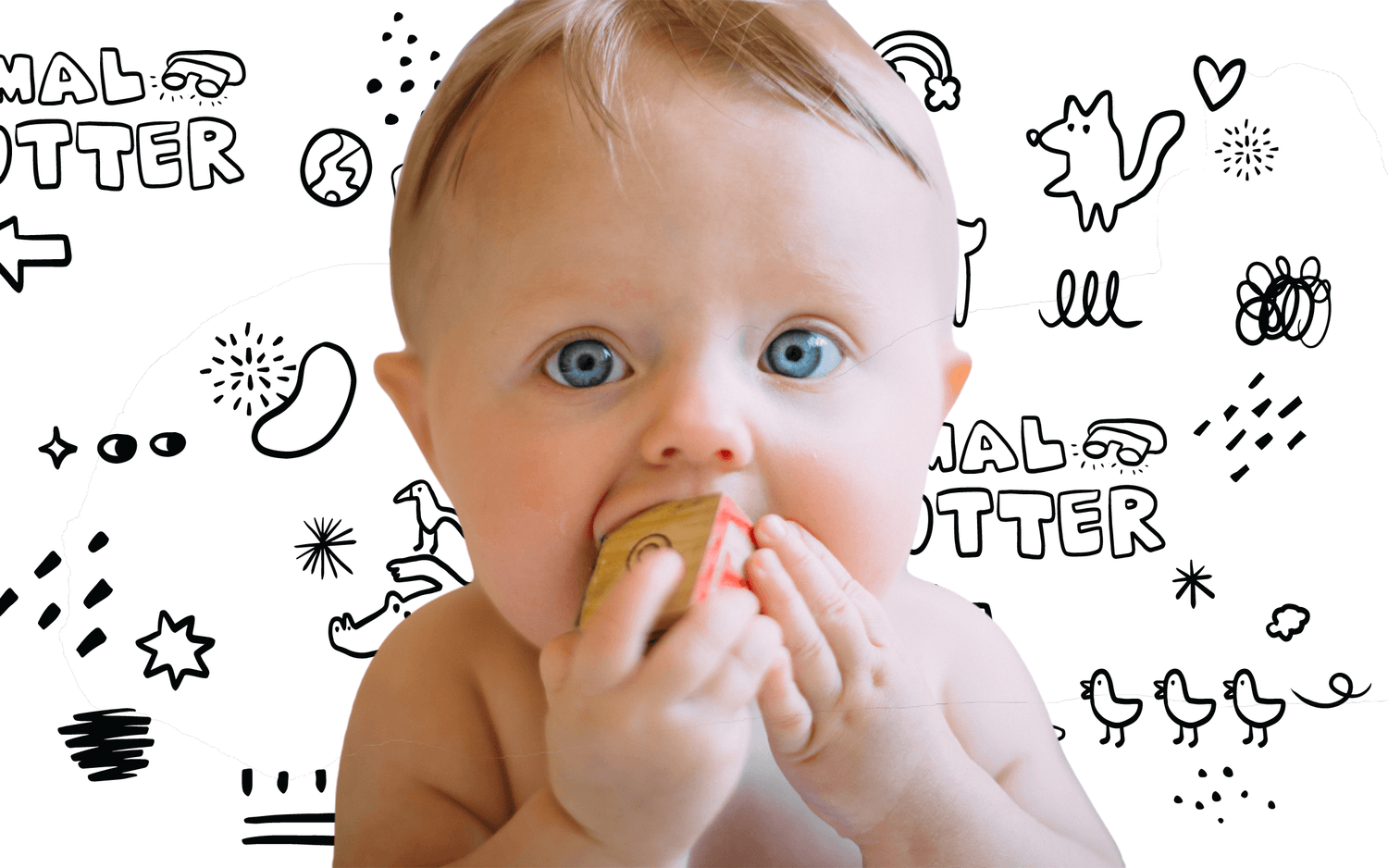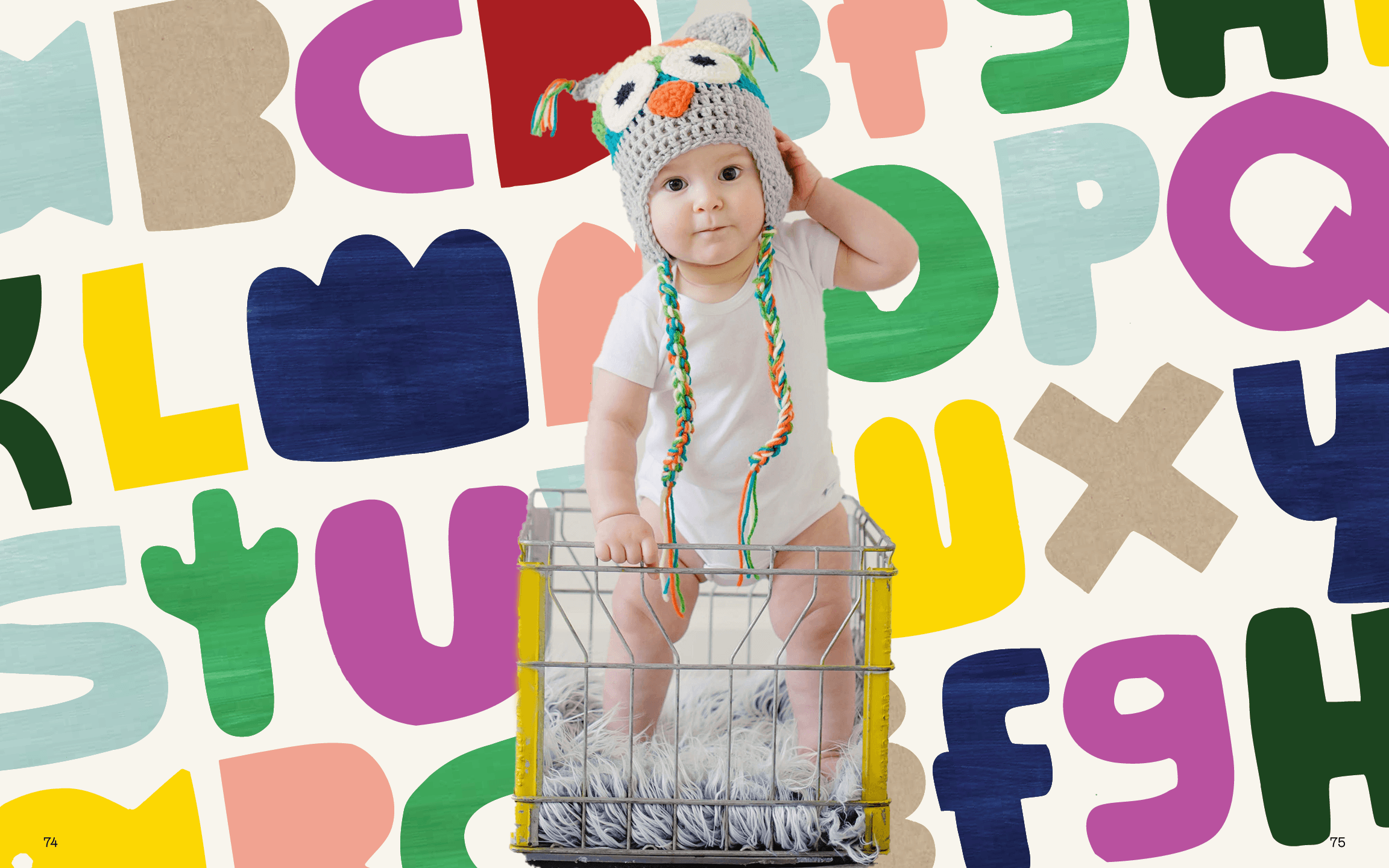As a new parent, you may be excited to think about what color eyes your sweet new bundle of joy will have. Maybe you want to know so you can be more prepared in planning their newborn wardrobe to complement their beautiful eyes.
Will they take after their father, or will they take after their mother? Could their eyes be a combination of both, or will they randomly take after a grandparent and have a totally different eye color than both their parents?
Each of these cases is possible, and we’ve pulled together expert data to dispel any myths and give you the facts on all of the factors that determine what color eyes your precious little bundle of joy has.
Take everything you learned about eye color in school and throw it out the window.
Remember in middle school, doing the basic genealogy eye color test to find out which color eyes your offspring would have? This is an overly simplified way of determining which eye colors are more likely. Although these dominant and recessive genetic charts play a role, scientists have discovered that there are actually sixteen genes that determine eye color.
Now your due date is approaching, and you and your partner or spouse would like to know if your baby’s eyes will be blue or will they begin to change to brown, green, or even hazel. Even if you are keeping the gender a secret and sticking to a gender-neutral wardrobe, you can still relish in the idea that your baby will have a certain eye color.
How Is a Baby’s Eye Color Determined?
Eye color is determined by the amount of melanin in the iris (The colorful circle around your baby’s pupil), which is influenced by a combination of dominant and recessive genes from both Mom and Dad.
There are ways of guessing the likelihood of the possible combinations, but it is unlikely to really know what color eyes your child will have before their first birthday.
Is It True That All Babies Have Blue Eyes When They Are Born?
It’s not true that all babies are born with blue eyes. Babies born with natural melanin, like African American, Black, Asian, or Hispanic descent, can also have lighter eyes but are typically born with brown eyes. In contrast, most caucasian babies are born with very little melanin, which is why their eyes may appear blue at birth.
How Does Melanin Work?
Eye color is determined by how much melanin is actually present in the iris. Your baby’s specific combination of genes from each parent determines how many melanocytes your baby has in their eyes, hair, and skin. Melanocytes are natural cells in the body that produce and deposit melanin over time.
Blue eyes are a recessive gene that is relatively absent of color or melanin. Instead, they undergo something called the Tyndall effect, which is why they appear blue.

The Tyndall effect is when we can see an individual light beam, like when dust or smoke are agitated near a window. This is because the scattered light contains tiny particles that reflect the light. Blue irises get their color the same way water and the sky appear blue in color — blue eyes scatter light so that more blue light reflects.
How Does Color Appear in the Eye?
The iris has two layers — the epithelium and the stroma.
The Epithelium is the iris’s back layer. It has a thickness of two cells and contains dark black-brown pigments. For almost everyone, even people with blue eyes, the epithelium contains brown pigment.
The stroma is the front layer, which is made up of overlapping colorless collagen fibers and cells. This top layer of the iris contains the melanin that determines the color of your baby’s eyes.
Brown Eyes
For people with brown eyes, not only does the epithelium contain melanin, but the stroma or top layer of the iris has a high concentration of melanin, too, which absorbs light and creates a brown hue.
Blue Eyes
When there is no pigment at all in the stroma, the collagen fibers scatter and absorb the majority of the longer wavelengths of light that come in so that more blue light gets back out and the eyes appear to be blue.
Hazel Eyes
Hazel is a combination of eye color genes of having more melanin, as in a brown-eyed parent, and a parent with less melanin, as in a green-eyed parent. In the case of hazel eyes, the child’s stroma will contain more melanin than blue eyes, but enough of the stroma will still reflect and scatter enough light back that they’ll have an in-between color.
Green Eyes
Green eyes come about when the stroma contains just a little melanin. The absence of high percentages of melanin means that green eyes reflect similarly to blue eyes, but the little bit of melanin is mixed in and reflected as well.
Grey Eyes
Grey eyes are extremely rare and reflect light similarly to blue eyes. However, they contain excess collagen deposits in the stroma that interfere with Tyndall scattering that block out the blue hues. Instead, grey eyes reflect all colors, which gives them their even grey hue.
Will My Baby’s Eyes Change Colors?

All babies’ eyes can change after birth. Typically if a baby has any form of lighter colored eyes, be it blue, light brown, or even gray, the eyes will darken, but not the other way around.
It can take the entire first eye of a baby’s life for their eye color to truly develop. However, after six months, you can begin to tell the direction those beautiful eyes are headed.
The amount of melanin is determined by inherited genetics. It is important to remember that the determination of a baby’s eye color is not as simple as school made it seem, because these are polygenic genes. Polygenic means that this trait is determined by many genes working together.
Heterogeneous or Homogeneous?
Each parent carries two copies of every gene, one copy they inherited from their mom and one they inherited from their dad. Homozygous means that the two copies match. If something is heterozygous, it means that the two copies of the gene are different. It’s impossible to determine if a person’s eye color is heterozygous or homozygous just by looking at their eye color.
Dominant Genes and Recessive Genes
It is easy to see which eye color was dominant in each parent, as the dominant color is the one you can see. But not eye colors are dominant. The two most dominant hues are brown and green, with brown being the most prevalent of all. Other colors like gray, blue, and even color combinations like hazel are made when two recessive genes are matched over a dominant and a recessive.
Can I predict what color eyes my baby will have?
Honestly, no. While it is somewhat likely that two brown-eyed parents may have brown eye children, it is just as likely that they could have a child with brown, green, blue, or hazel eyes, depending on the combination of genes your child receives from each parent.
Although your baby’s eye color cannot really be predicted, you can make some guesstimations based on the following traits:
- What are the parents’ eye colors?
- Are the parents’ eye color homozygous or heterozygous?
- Are the eye colors of the parents’ eyes dominant or recessive?
- What color eyes do each set of grandparents have?
Most Common Eye Colors?
Eighty percent of the world’s population has brown eyes, while only eight percent have blue. However, in some Nordic populations, blue eyes make up 40% of the population. This is believed to be caused by a genetic mutation in a 10,000-year-old common ancestor.
Amber — yellowish-brown eyes take up 5%, and hazel — greenish-brown eyes also take up 5%, which leaves green and grey-eyed people. Green-eyed people make up 2 percent of the population. And finally, one or two percentages, give or take, including the rare grey eyes.
Every Eye Color Is Unique
No matter what — your baby’s eyes may be rich with deep pools of beautiful, shiny, and chocolaty melanin or their eyes. Or maybe your baby’s eyes might be melanin challenged — glimmering and reflecting all the colors like crystal glass, the beauty of those eyes is that they are unique to your baby and that they contain a piece of you.
Determining your baby’s eye color before they’ve had a chance to develop is way more difficult than determining if you’ve provided them with the best baby clothes and items the market has to offer.
Instead, enjoy spending your time staring into those beautiful, unique eyes and building those lasting bonds as your baby continues to grow and develop.
Sources
https://www.todaysparent.com/baby/baby-development/baby-eye-colour/
https://medium.com/@ptvan/structural-eye-color-is-amazing-24f47723bf9a
https://www.aucklandeye.co.nz/about/blog/7-interesting-facts-about-blue-eyes/







Leave a comment
This site is protected by hCaptcha and the hCaptcha Privacy Policy and Terms of Service apply.